FLY FISHING MAINE'S RAPID RIVER
FLY FISHING MAINE'S RAPID RIVER
Tall tales and lore of 4 pound, football girth brook trout with contrasting exquisite colors rivaling that of any fish on earth are almost told to mystical proportion. What lengths would a devoted angler pursue to hold such a specimen in their hand? Where is one of these creatures said to reside other than the practically intangible vastness of Labrador? The Rapid River.
Mid-September found the crew fly fishing on the Rapid River, one of Maine’s legendary wild brook trout fisheries. However, obtaining information about this place proved to be exceptionally difficult and what we did glean from our research was limited. After countless Google searches and browsing every Northeastern fishing forum, we fell short of a solid game plan.
The Rapid is part of the Androscoggin River system that occupies North Western Maine Maine/ New Hampshire border. The Rapid starts its journey at Upper Dam where it flows from Mooselookmeguntic Lake a very short distance into Upper Richardson Lake and heading south into Lower Richardson Lake, it exits at Middle Dam and continues downstream for approximately half a mile before dumping into Pond in the River (which is basically another small lake). The next notable point is Lower Dam where the Rapid exits Pond in the River flowing Northwest for 2 miles or so before making its way into Lake Umbagog.
As its name implies, this river has an extremely aggressive flow and is very turbulent. Even at a somewhat mild 500 CFS there is no possible way to even consider crossing it unless you plan on going swimming. Most fishing will be done from the bank or only a few steps out before it gets too deep and currents too strong to hold footing.
Now let’s talk about how to get there. Simply put, this river is in no man’s land – access is difficult and poorly marked. If you’re not willing to put miles on your feet, you may as well move onto another river. Long drives on maze-like logging roads (that somehow can fool the most detailed GPS maps) only to get to what seems like an even longer walk is the name of the game here. But if this sounds appealing, and is your type of adventure, by all means, read on.
Our endeavor began every morning from our basecamp at Umbagog (Pronounced Um-BAY-gogg, get it right or you will be constantly corrected by the locals) Lake State Park Campground located along Route 26 right on the Maine/New Hampshire border about a mile Northwest of Upton Maine.
Our first morning we set out on an adventure for Lower Dam. Please note there is absolutely zero phone service and most of the route is extensive travel along random logging roads, even though we are giving road names, most, if not all, of these roads are completely unmarked. GPS units will not get you to these points so prepare yourself ahead of time with printed out maps and very detailed directions.
OK, so now you’ve finally made it to the the edge of the river. Where to begin? Obviously, fly selection will vary depending on the time of year you choose to go. For starters any fly you choose needs to be barbless, so break out your hemostats and mash them down. We caught fish on a multitude of different flies, from streamers, to nymphs, to dries. However, nymphing by far and away produced the most results. We fished in mid-September, about 2 weeks before the close of the season, and did very well on a variety of caddis nymphs, both larva and pupa stage. Tungsten beadhead nymphs helped to offset the strong currents and get down to where the fish were holding a bit easier. A simple peacock herl and copper wire Frenchie with an orange hotbead accounted for many fish, both brookies and landlocked salmon. All in all our group tightline nymphed a tandem setup of various nymphs. Caddis predominated but lots of other fish were caught on just generic pheasant tails, Copper John’s, etc. Most other fishermen we ran into were using large buoyant indicators, however the water is fast, the hits were very aggressive and we had no trouble at all deciphering a take. Royal Wulffs and other large gaudy attractor style dries elicited a few takes on the surface as did good size cinnamon ants. A few fish were taken on streamers but even with long sink tips and conehead buggers it’s tough to get them down deep enough before they are out of the strike zone. A very heavy #4 natural color Sculpzilla pattern produced the most fish taken on streamers. The bottomline was that the fish really weren’t all that picky, and brook trout by nature are quite aggressive and not that selective. Like always, proper presentation prevails. So tie on a few typical “in season” flies you have confidence in and you should be landing brookies in no time.
Due to the timing of our trip we weren’t able to fish the section directly below Lower Dam to about a half mile downstream to Long pool (this particular section closes after September 15th) The boundary of this stretch is only marked with a red painted tree. However, we did spend an entire day fishing from long pool downstream to Lake Umbagog. Bass. Lots of bass. We caught a few smaller brookies and a small salmon or two but we predominantly caught small bass, and the further downstream toward Lake Umbagog we went, the more bass we caught. Give it a shot if you wish but we would highly recommend concentrating your efforts on the section between Middle Dam and Pond in the River.
The 500 CFS mark created ideal nymphing water and we would suspect that anything over say 800 would be borderline. A few anglers we spoke to riverside said that anything 1000 CFS or above is completely blown out and un-fishable. Check out Waterline for their daily flow updates.
It’s refreshing to still have such a remote, yet fairly accessible river providing trophy fly fishing opportunities in the northeast. Even though it is quite the challenge to get to, don’t expect to be the only one on the river. More than likely you WILL be sharing the water with other fisherman. Regardless, don’t let that discourage you from making the trip, there are plenty of gorgeous wild brook trout to be had. Although we never set our hooks into any true monsters, we heard enough first hand accounts from other fishermen we talked to on the river, some of which were absolute slobs in the 20” and 4 to 5 pound range. Convincing enough for us to make it a yearly destination. Don’t dismiss the landlocked salmon either, they are an absolute blast to catch and once hooked spend about as much time out of the water as they do in it. Enjoy the beauty of the wilderness around the Rapid’s fish rich waters and hopefully you will land the Brook trout of a lifetime.








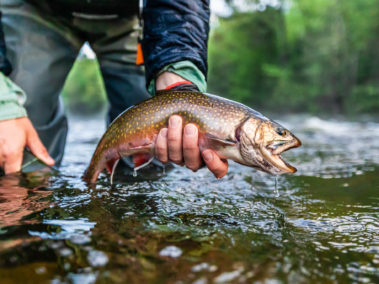
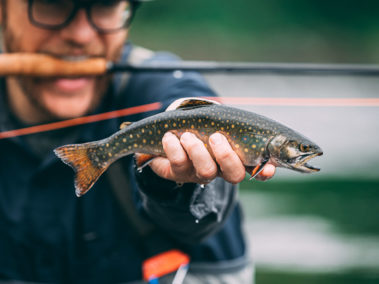
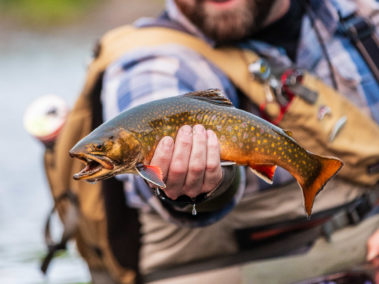
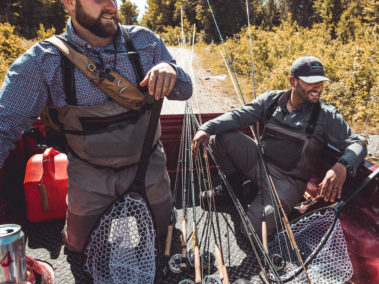
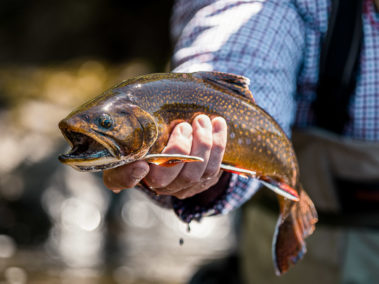

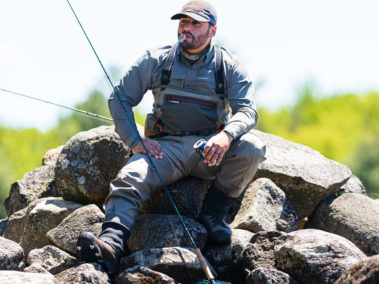
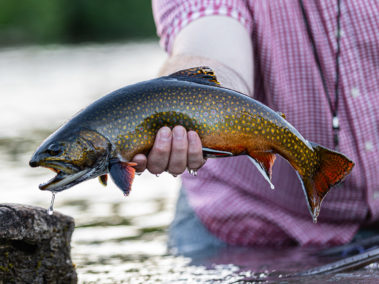
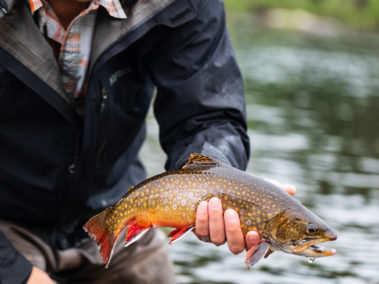



Lived in Maine for 40 years. By far the best directions to the Rapid River have ever come across. Delightful article. Best of luck.
Thanks for checking out the article. It is amazing how little info is out there, especially if you want to do it yourself and not start from Lakewood Camps.